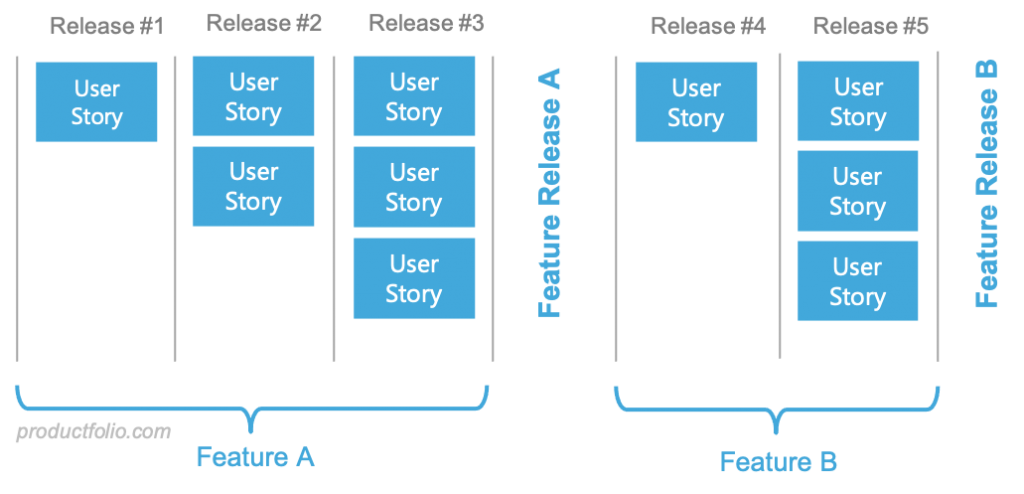What is Story Mapping
A story map is a helpful tool when planning a release. It is based on user stories of what needs to be built. With user story mapping, product teams can describe the customer journey and divide it into smaller portions. This helps for focusing on the tasks that guarantee or promote the desired outcomes.
The process involves organizing user stories along two axes. Steps in the customer journey or user activities are arranged along the horizontal axis according to priority. Functionality is arranged on the vertical axis according to sophistication as user stories.

This notion of user story mapping was credited to Jeff Patton. He described it in 2005 without using the term. Patton calls it “story mapping” for the first time in the article, “The New User Story Backlog is a Map,” published in 2008.
How is Story Mapping Helpful?
Create Value
A story map can help you to create real user value. It enables product teams to better understand how users would interact with the product. This guides what to do to achieve the desired outcomes. Story mapping can also make it possible for you to deliver the most value in a timely fashion. It supports efficient iterations driven by what users prefer.
Guide Requirements
The use of a story map can enable your team to write better requirements. It can make it possible to better describe what users should be able to do with your product. With it, you can see how items, both large and small, relate in the scheme of things.
Improved Prioritization
Use a story map to arrange tasks into different releases, each of which delivers a new experience. As you proceed with your work, a quick look at the framework can let you know what should take a higher priority. New steps on the map are prioritized while more are also added as you complete previous steps.
How Story Mapping Works
The first thing you want to do when looking to do story mapping is to decide what to use. Are you using sticky notes, a whiteboard, or a piece of software? With that out of the way, you may proceed as follows:
Get to know your users
Effective story mapping starts with being familiar with your target market. Who are your typical users and what are their goals or needs?
Create personas based on what you know to promote a shared outlook and make possible more helpful user stories.
Understand the problem
What does your product solve for users? Here is a question you need to provide a good answer to. It will serve as a helpful guide for a mapping that truly delivers the desired experience to customers. Put yourself in your users’ shoes to get a better understanding of the problem.
Determine activities and map user stories
Try to picture the typical user journey. What steps will users likely follow when interacting with your product? Determine and map expected user activities that will form the themes of your user story map.
After determining user activities, you can then arrange user stories relating to each one underneath. These typically take the form, “As a [user type], I want to [action] so that [benefit].”.
Prioritize
Next, you need to map how users transition when using the product. The flow is usually from left to right. There may be a need to create multiple scenarios when you have diverse user types to serve.
You are to order user stories vertically with regard to how important they are to themes or functions. The most important stories are placed at the top.
Agree on sprints and releases
Among other things, you should decide with your team how to group items to work on at the same time. Agree on what to deliver in each sprint. Decide on how to allocate items to product releases. You ideally start with work that offers the most to user experience.


